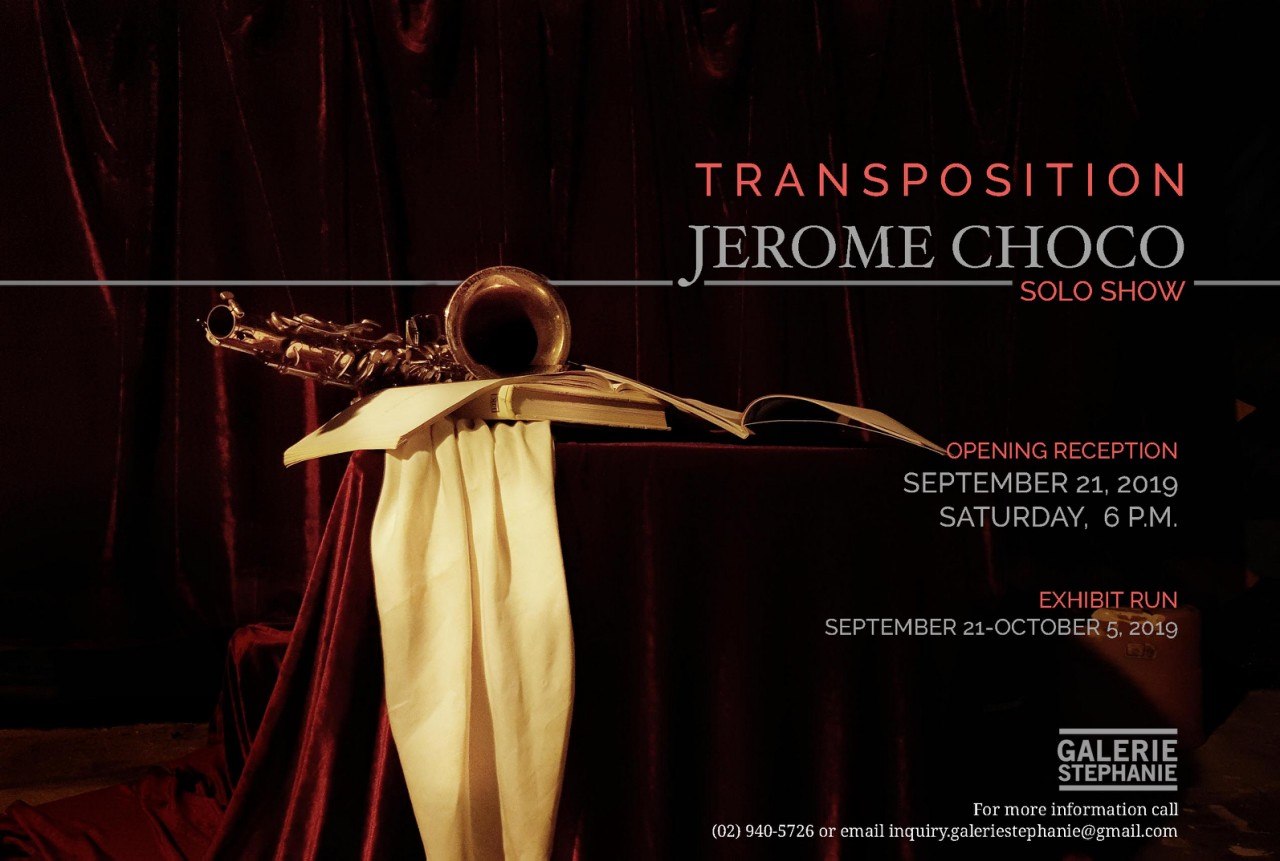Transposition

Saturday, September 21, 2019 | 6 PM
Galerie Stephanie
Unit 4021 East Wing, Shangri-La Plaza Mall, EDSA cor. Shaw Boulevard, 1552 Mandaluyong, Philippines
In music, to transpose is to shift a melody to another key, without changing its overall structure. In Transposition, Jerome Choco recasts iconic scenes in works by the Old Masters, restaging them as minute moments in the lives of band members, himself included: cleaning instruments, resting, youthful buffoonery. In doing so he transposes music to visual arts, Orient to Occident, present to past, emerging to canonical. Semblances of structure and mood remain recognizable, but the meaning is transformed. Like new lyrics to familiar refrains, Choco makes the canvas sing a song he has transposed in various ways to suit his voice and story.
Music was Choco’s first foray into artistic practice. At 15, he joined the marching band; before he picked up the paintbrush, he first toyed with other instruments: the guitar, the clarinet, the saxophone, whatever was made available to him.
While music may have been his entry point, the creative environment of his art school in Angono brought visual arts to the forefront of his consciousness. It was really his encounters with the Old Masters that struck a chord within. The chiaroscuro, the elegant drapery, the living skin. “Unang kita ko pa lang sa gawa ni Caravaggio, gandang-ganda na ako,” he shares, “kahit na sa Google ko pa lang nakita, kahit hindi ko pa alam ang story nya.” (“The first time I saw the works of Caravaggio, I was enthralled. Even if I had only seen his paintings via Google, even if I had no idea what his story was.”)
Choco’s fine arts education is indeed informed not by direct access to the actual masterpieces, which remain in distant European collections; he studies them from the periphery, through roundabout sources like books and the internet. This peripherality is a motif echoed in other aspects of his artistic journey. As a band member, he learned music through borrowed instruments. As a student, he could not afford expensive media, so he developed his skills in part through the kindness of classmates who shared their materials. He continues to work from a shared studio in Angono, away from the urban center of the Manila art scene. Then and now, Choco’s artistic consciousness has been shaped by the experience of being in the margins.
This suite of works urges his audience to understand the plurality of trajectories, both personal and art historical. Here, Jerome Choco’s work as a painter is also his life as a musician.
Notes by Karl Castro
